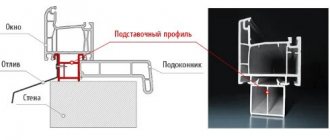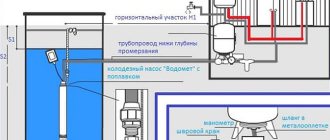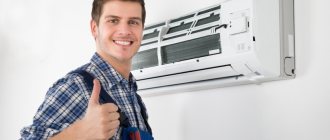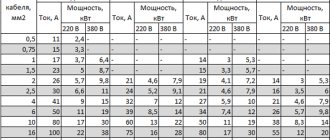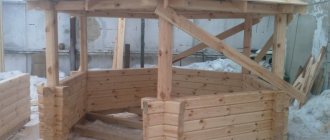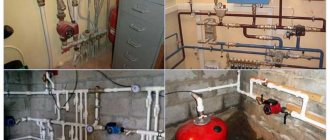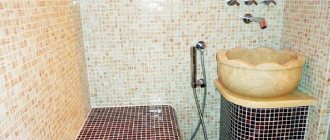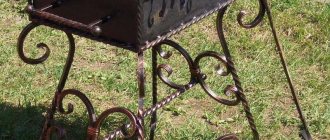Additional pump in heating: why and when is it needed?
The circulation pump is the main type of equipment that is installed in the heating systems of private houses. The pump allows you to quickly and evenly pump coolant to the heating devices in the house, which is the key to uniform and high-quality heating of the premises.
Installing a circulation pump is mandatory if the house has heated floors and a closed heating system. But even in such cases, one pump may not be enough, especially when it comes to two-story mansions. In what cases is it recommended to install additional pumps in the heating system? Will it be possible to increase the efficiency of the heating system by installing another pump?
Why install a circulation pump
If you are faced with problems of uneven heating of the heating system around the house, you can solve it in two ways:
- Replace all heating pipes by installing larger diameter pipes;
- Or install a circulation pump in the system.
Obviously, installing a circulation pump is much cheaper and more practical than replacing pipes. By installing a circulation pump into the system, you can solve several problems:
- The heating of heating devices will be more uniform;
- The heating system circuit will expand significantly;
- The pump will eliminate the problem of air locks.
The pump will make it easier to shower and use other plumbing fixtures at home at the same time. By the way, you can always buy cheap shower cabins. Moscow is full of surprises and the TM Titan online store is one of them.
It is worth noting that to install a circulation pump in a ready-made heating system, you do not have to do complex installation work. Insertion technology is used.
Grundfos pump models
UPS pumps are circulation type units with a wet rotor. These models use an asynchronous motor. The pump is equipped with a special terminal box, which ensures the connection of the unit to electricity. During initial start-up, it is recommended to open the technological opening and bleed air from the working chamber of the pump. The design also provides for the possibility of manually turning the rotor in case of souring. These pumps have three speed modes of operation, which are set manually and ensure stable operation of certain systems.
The new model AIpha 2 (L) pumps are the first in the general line of the series. This pump has more capabilities than the UPS series pumps. There is an electric motor here that has permanent magnets on the body. If one of the magnets is removed, which Russian craftsmen do in many cases, the energy consumption of the unit can be significantly reduced. Also in the new design there is no technological nut for air release. In this model, air is automatically released when the pump is turned on briefly at third speed. Connecting to the power supply has become easier, this is done using a plug connector. This model already has seven operating modes. To the existing three, two more operating modes with a constant differential pressure and two proportional control modes have been added.
Pump operation in constant differential mode - assumes stable operation of the pump even in cases where changes in fluid flow and pressure drop occur in the system. A certain level of pressure created by the pump will always be automatically maintained at the same level.
Proportional control mode - this operating mode ensures reliable operation of the pump when the system experiences variable flow. This mode cannot be replaced if during operation the radiators periodically overlap, which leads to an increase in pressure in the system. The pump rotation speed is automatically reduced, as a result, the flow and pressure in the system will decrease proportionally. There are still three main modes of operation. Systems in which they are used;
- warm floor,
- single pipe systems,
- dead-end systems,
- collector systems,
- two-pipe systems,
- radiator systems.
The most innovative can be called the AIpha 3 model. This model can be considered as a very precise tool that is capable of simultaneously ensuring reliable operation of the entire system and at the same time allows you to control coolant flow. This feature can be used in conjunction with the Grundfos GO Balance app. The presence of these applications allows you to configure the entire fuel system remotely. This equipment can also be used to measure and balance the entire heating system, installing it in place of another circulation pump that is suitable in size and dimensions. The pump is especially good for balancing radiators, short loops in a heated floor system, as well as for low coolant flows. The possibility of three-fold gradation of both constant and proportional pressure modes makes this model very reliable and productive. After all, as you know, for any master installing a heating system, the ability of the installed equipment to ensure normal coolant flow is very important, and for the customer, the reliability and efficiency of this system is important. The circulation pump gives a positive result to both. Economical and quite easy to maintain, this pump is very well suited for installing autonomous heating in country houses and individual apartments.
Selection (calculation) of a circulation pump
To select a circulation pump, you need to calculate its power. If you have a complex heating system, it is better to entrust the calculation of the pump to a specialist. In a simple heating system, the power of the required pump is calculated by the formula:
The calculation will allow you to select a pump according to the parameter: maximum water output or throughput.
Paying attention
Please note that for the circulation pump to operate, electricity must be available. The electrical power is not indicated on the pump labeling, but is 100-250 W, which allows you to connect them to any group of power outlets in the house. However, to protect against electric shock, the pump power line must be protected by a 30 mA RCD.
Important! When operating, circulation pumps produce a fairly strong “buzzing” sound. This parameter may be indicated in the pump descriptions and you need to pay attention to it; the smaller it is, the better.
Power connection
The circulation pumps operate from a 220 V network. The connection is standard; a separate power supply line with a circuit breaker is desirable. The connection requires three wires - phase, neutral and ground.
Circulation pump electrical connection diagram
The connection to the network itself can be organized using a three-pin socket and plug. This connection method is used if the pump comes with a connected power wire. It can also be connected via a terminal block or directly with a cable to the terminals.
The terminals are located under a plastic cover. We remove it by unscrewing several bolts and find three connectors. They are usually labeled (the pictograms are N - neutral wire, L - phase, and “ground” has an international designation), so it’s hard to make a mistake.
Where to connect the power cable
Since the entire system depends on the performance of the circulation pump, it makes sense to make a backup power supply - install a stabilizer with connected batteries. With such a power supply system, everything will work for several days, since the pump itself and the boiler automation “pulls” electricity to a maximum of 250-300 W. But when organizing, you need to calculate everything and select the battery capacity. The disadvantage of such a system is the need to ensure that the batteries do not discharge.
How to connect a circulator to electricity through a stabilizer
Installing a circulation pump in a heating system
Material for work
Materials you will need:
- The pump itself;
- Connecting fittings for tapping the pump;
- Check valve or bypass valve;
- Two shut-off valves (ball valves) for installation on both sides of the pump;
- Coarse filter;
- Connecting coupling with lock nut;
- Plumbing winding and paste.
Tool for work
For work, prepare the following tool:
- Adjustable wrenches and wrenches of the required size;
- Welding.
Setting up the pump yourself
The final stage of equipping the heating system with a pump is to connect it. This is a fairly simple process. To do this, you will need a separate machine on the dashboard, which will be specially designated for this mechanism. To connect the unit, you need to connect the power cable to the terminal box. It is critical that the connection correctly matches the specified designation. The maximum cable cross-section is 2.5 mm2.
Also, do not forget about grounding the pump. The ideal option would be to have a grounding loop in the living room. If it is not there, a metal rod will come to the rescue, which is driven deep into the ground.
Selecting a pump installation location
A modern “wet” type circulation pump can be installed in both the return and direct heating branches. Traditionally, the circulation pump is placed in the “return” in front of the boiler in order to:
- Reduce wear and increase the service life of the pump rotor;
- Avoid boiler boiling due to air being drawn out of the boiler by the pump;
- Damage to the pump due to possible boiling of the boiler, especially solid fuel.
Pump diagram in the forward pipeline and Pump diagram in the return pipeline
Combined circulation
This type of system involves the use of solid fuel boilers, as well as stoves equipped with water circuits. This installation is designed to allow the connection of a natural type of circulation. The method is very effective, especially if there is a possibility of frequent power outages. In order to install the pump in this case, you will need a bypass. Convenience lies in the ability to choose one of two circulation methods - forced and natural.
The circuit is simple and consists of a small, separately routed section of pipe. Such an element has a valve or ball valve. The very essence of tapping is to mount curved sections of pipes that have threads at the ends. If all the work is carried out correctly, the pump will be running away from the main line of the heating system. And adjustment will be made by opening or closing taps.
An important element of installation is the fact that the entire “bypass” structure is initially assembled separately from the heating main. Then, when all the elements are assembled into one whole, the structure is installed using a welding machine. The work must be carried out efficiently, since all seams must be sealed.
Instructions for connecting the circulation pump
Note: There are two options for pump tapping: installing a shut-off valve or installing a ball valve on the main tapping line.
- When installing the pump in an existing heating network, first drain all the coolant;
- If necessary, clean the heating pipes;
- A bypass is installed at the pump installation site. The diameter of the bypass pipe must be made smaller than the diameter of the main pipe;
- We install a dirty filter in front of the pump. The filter has an arrow for water movement. It will stop the system sludge;
- The pump shaft must be installed horizontally. An arrow for coolant movement is shown on the pump body;
- Shut-off valves (ball valves) are installed before and after the pump. They play a technical role in case of repairs.;
- A shut-off valve or ball valve is placed on the main coolant pipe;
- When assembling, we adhere to the diagram;
- After installation of the pump is completed, the system is filled with coolant. Next, the pump screw is opened to bleed air (water will appear in the screw hole).
Important! The installation of the circulation pump is complete. If the heating system is shorter than 80 meters, then one circulation pump is sufficient.
Photo of vertical installation of a circulation pump with a ball valve
Photo of vertical installation of a pump with three valves
What to consider when choosing the right location
When installing the device in the circuit, the following is taken into account:
- correct orientation (indicated in the instructions, horizontal or vertical);
- correct harness (correctly selected set of additional devices);
- if there are two or more branches, then the best option is to install a separate pump for each (in this case, it is possible to immediately achieve equal temperatures in the rooms for each branch and use fuel more economically).
Where is it better to install: supply or return
Professionals recommend installing the pump before the first branch of the circuit. The device is designed for temperatures of the pumped liquid up to 115°C, so the choice of supply or return pipe is not important.
This is significant when installed in a system with a steam boiler, since the coolant at the outlet has a temperature above 100°C, which is unacceptable. On the return pipe, the temperature is set within normal limits.
Return is the only option for solid fuel , with the exception of systems with automated control.
Important! Boilers without automation often overheat the coolant to boiling , so steam enters the pump installed in the supply. This leads to an almost complete stop of fluid movement along the circuit and an emergency situation, even an explosion .
The return pump may also be filled with steam , but in this case the response time of the safety valve increases, which allows you to solve the problem and avoid disaster.
Electrical connection of the pump
Due to the fact that water flows through the pump, the electrical power supply circuit of the pump must be protected by an RCD (residual current device) with a cut-off current of 30 mA. You can connect the pump to power:
- Through a socket with a grounding contact and degree of protection IP44;
- Directly, without sockets, using the cable included with the pump or a PVS cable 3×1.5 mm.
©Obotoplenii.ru
Articles on the topic
- About the heating system: components of the heating system
- Home heating: where to choose home heating
- Heating system pumps: types and methods of installation of heating circulation pumps
- 10 answers to the practical use of antifreeze in heating systems
- Hydropneumatic flushing of heating systems, instructions
- Hydraulic separator: description, purpose
- Two options for inserting a circulation pump: advice from professionals
What to do if the device hums but does not turn?
This problem is faced by those pump owners who do not often use the devices and ignore the need to maintain the heating system. To fix the problem you will need:
- Turn off the power to the unit;
- Drain the coolant from the pump and adjacent pipes;
- Remove the screws that secure the motor housing;
- Remove the engine along with the rotor;
- Turn the rotor with a screwdriver, resting against the notch.
If the cause of the breakdown lies in foreign objects getting into the device, then you need to act in the following order:
- Turn off the power to the pump;
- Drain the water;
- Unscrew the screws holding the motor housing;
- Find and remove foreign objects;
- Install a strainer on the inlet pipe.
Once the repair is complete, the device will start working again. The filtration element will protect the device from solid particles, which will significantly extend the service life of the entire system.
Features and installation procedure of the electric pump
To find out how to properly install a circulation pump, it is recommended to use the heating project. It is usually developed during the design stage of the house. If the heating circuit of a building is being modernized, then in this situation the best place to install the device is the bypass.
The presence of a jumper with an electric pump, filter and shut-off valves allows the heating network to function if the building loses power or an electrical appliance breaks down. Thanks to the bypass, it will be possible to switch the system to circulate the medium naturally. This will prevent you from being left completely without heat in the event of an emergency.
The bypass jumper can have almost any configuration. Often there is not enough space for installation. Therefore, non-standard solutions are being implemented. However, more often the installation is still carried out according to standard schemes.
One of the options for a bypass jumper for an electric heating pump Source e.allegroimg.com
If there is free space, a ready-made bypass assembly is usually installed. This design is manufactured in production shops. It is equipped with taps or valves are built into it. The finished bypass unit can be mounted by welding or connected via thread. Any such structure has a free area intended for installing an electric pump using flanges or couplings.
Thermal circuits in houses are often created from polypropylene pipes. This option simplifies the process of installing a circulation device for pumping coolant. The master usually spends about 1 hour on the work. More time is required if installation is carried out on metal pipes. It is necessary to use not only welding, but also packing of threaded connections.
During installation of the circulation pump, the technician carries out the following actions:
- prepares components - filter, shut-off valves, threaded pipes, drains;
- connects all threaded elements of the assembly using a special sealing tow and paste;
- assembles the loop together with the pump without carefully tightening the union nuts;
An assembled loop with a pump and a unit that is mounted underneath it Source 1-teplodom.ru
- outlines and cuts out an area on the return line for installing the tap;
- carries out welding work - first tacks the metal elements of the assembly, then removes the pump to prevent it from being damaged by welding splashes and completes the operations started;
- assembles the unit under the pump and carries out its installation;
- the circulation device is installed in place;
- carries out the final tightening of the American electrical appliance.
Important! On the electric pump, the direction of the arrow must coincide with the actual movement of the working medium in the heating pipeline.
At the end of the work, the master connects the wires. They are connected to the terminals located in the mounting box of the circulation device.
System check
For normal water circulation, the heating system needs to warm up. It takes 2-3 hours. Wait the specified time and check each battery by touch, they should all be at the same temperature.
If you find a hotter or colder one, try deflating. For overheated batteries, you need to bleed them in a subsequent radiator, for cold ones - in the previous one. Most likely, the problem will be resolved.
Another possible reason is a leak. Carefully inspect the connection points between the batteries and the pipe. Even if there are no obvious puddles, water may appear at the joints. Recheck the connection and the problem will go away.
The last uncharacteristic point is extraneous noise in the pump. In new models, this problem only occurs if foreign objects, rust or other debris gets into the pump. To avoid this, it is recommended to install a filter on the supply pipe. Eliminated by disassembling and cleaning the pump.
Pros and cons of using a heating pump
Just a couple of decades ago, in the private sector, houses were equipped with gravity-type heating. A wood stove or gas boiler was used as a heat source. There was only one area of application left for large circulation devices - centralized heating networks.
Today, manufacturers of heating equipment offer smaller units that have the following advantages:
- The speed of movement of the coolant has increased . The heat generated by the boiler quickly enters the radiators. Due to this, the process of warming up the premises was significantly accelerated.
- The higher the movement speed, the higher the pipe capacity . This means that an identical volume of heat can be delivered to rooms using a pipe with a smaller diameter.
- Water heating schemes have undergone significant changes . The highway can be laid with the slightest slope. Also, the complexity and length of the line can be anything. The basic rule is the rational choice of a heating pump based on the required power.
- With the help of a household circulation device, it became possible to organize heated floors in the house, as well as an effective closed-type heating system.
- It became possible to hide the entire heating communication line passing through the rooms, which does not always go well with the design of the room. Options for laying pipes behind suspended ceilings, in walls or under floor coverings are quite common.
The disadvantages of pumping systems include the dependence of operation on the supply of electricity and its consumption by the pumping apparatus during the heating season.
The leading company Grundfos, engaged in the development of heating equipment, has released innovative models of Alpfa2 circulation pumps, capable of changing performance based on the needs of the heating system, which allows saving on electricity consumption
Therefore, if the area is often deprived of power supply, it would be advisable to install a device to provide uninterrupted power. The second drawback is not critical and can be eliminated by correctly selecting the power and model of the circulation pump.
Optimal pump speed
The task of a heating system with pump circulation is to reliably deliver coolant to all consumers of the system, including the furthest radiators. For this to happen effectively, the pump must create the pressure necessary for this: the designers calculate it, taking into account the hydraulic resistance of the pipes. Most often, household pumps have 3-7 rotor speeds, which allows you to increase or decrease work productivity.
The easiest way to select the optimal speed of the circulation pump:
- The heating system must be brought into operating mode.
- Measure the pipe surface temperature before and after the boiler using a laser surface thermometer (pyrometer).
- If the temperature difference is more than 20 degrees, the rotor rotation speed must be increased.
- If the difference is less than 10 degrees, the flow rate must be reduced. The optimal difference between the supply and return heating levels is approximately 15 degrees.
The pyrometer need not be used when the supply and return pipes are equipped with thermometers. If, with the help of adjustments, it is not possible to achieve the required temperature difference of 10-20 degrees, this indicates low efficiency of the system. The cause is most often an error in the selection of the circulation apparatus. Too low a return water temperature provokes an increase in the load on the boiler and an increase in energy consumption. Very hot water circulates too quickly to transfer heat to the heaters.
Briefly about the main thing
Installing an electric pump in the heating circuit of the house allows you to provide the necessary pressure in it. This will allow the premises to be heated as efficiently as possible. Electric pumps are installed in homes in “dry” and “wet” versions. The second type of device is more common.
They usually try to install the electric pump on the return line after all radiators, tie-ins and a reservoir for expansion of the coolant. If necessary, it can be mounted on the supply, but at the maximum distance from the boiler.
The pump is installed on a bypass. This is a loop with a filter and shut-off valves. First, all its elements are assembled into a single structure, and then it crashes into the main pipeline with a separate tap to shut it off.
Ratings 0
